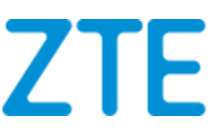ZTE Corporation, an international provider of telecommunications, enterprise and consumer technology solutions for the Mobile Internet, today has released its white paper on uSmart RNIA.
The white paper elaborates on ZTE’s intelligent wireless network solution, and introduces the artificial intelligence technologies. The solution and technologies can be applied to perform big data analysis and integrated into the different development stages of the wireless network life cycle in a bid to help customers address various challenges in the new era of 5G.
Based on the network analysis, control and management capabilities, ZTE’s intelligent wireless network solution can build up the intra-domain autonomous closed-loop of wireless networks, thereby guaranteeing network connectivity and performance. The solution aims to help operators build networks in a concise and fast way with low cost but great efficiency.
The white paper has demonstrated eight typical application scenarios of the intelligent wireless network. For instance, precise planning can improve the network planning efficiency by 70% compared to conventional network planning, and solve the problem of suppressed traffic area to increase the traffic by 42%.
In addition, automatic site commissioning can reduce the commissioning time from 20 minutes for a single station to only 3 minutes for 100 stations, compared with the traditional method.. It can also realise automatic monitoring to ensure the data accuracy and improve the efficiency by at least 100 times.
Moreover, Automatic Antenna Pattern Control can shorten the verification from the original 40 person days to 2 person days. Compared with the previous weight optimisation and adjustment, the overall coverage has been significantly improved, with an increase of 5.5dB in RSRP and 2.4dB in SINR .
Furthermore, AI power saving has been widely adopted on a global scale exceeding 100,000 cells. It saves around 20% power consumption and over 90% labors.
According to the white paper, the wireless network will achieve full intelligence through the following three stages: firstly, the wireless network will consolidate basic functions, such as base station portraits, to achieve RAN digitalisation. Meanwhile, the wireless network will upgrade NE side computing power, research and develop algorithms and features that are valuable to customers, so that AI can solve practical problems.
Secondly, the knowledge plane is introduced on the vertical dimension. Raw data and pre-processed data are collected at different levels of the RAN, and then converted into knowledge through machine learning.
Finally, digital twins are introduced to enable the intelligent closed loop of wireless networks.
Moving forward, ZTE will work together with operators and partners to promote the development of wireless network intelligence, adhering to openness, cooperation and win-win strategy.
Comment on this article below or via Twitter: @VanillaPlus OR @jcvplus






